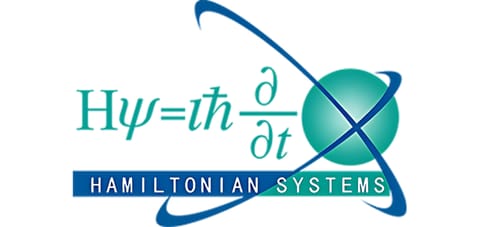- Reliability Edge Weekly Newsletter by Hamiltonian Systems
- Posts
- Reliability Edge Weekly Reliability Pulse
Reliability Edge Weekly Reliability Pulse
The newsletter for reliability and maintenance engineers and IT leaders, to improve the quality of their asset and MRO data to achieve excellence in manufacturing, published by Hamiltonian Systems. Unified data management & more...


“Kaizen isn’t about fixing everything at once—it’s about noticing one small friction today, smoothing it tomorrow, and trusting that momentum will carry you to excellence.” — Jeannie Lewis
Efficient Data Systems for Maintenance Planning
Efficient Data Systems for Maintenance Planning
Data: The Hidden Backbone of Maintenance
Every work order, downtime event, and spare part transaction produces valuable information. But when this data is collected manually and is not validated, it can become inconsistent; maintenance planning turns into guesswork. Reliability teams don’t just need more data; they need accurate, trusted data delivered at the right time.
Why Automated Data Collection Matters
Manual entry isn’t just slow, it’s risky. A missed update, a typo, or a delay in reporting can distort asset histories and create blind spots. Automated data collection that includes validation solves this by:
Capturing sensor and system data continuously
Standardizing information across all platforms
Feeding accurate updates directly into CMMS dashboards
The result is a single source of truth that planners, schedulers, and technicians can rely on.
Core Benefits of Efficient Data Systems
📈 Accurate Forecasting
Planners predict maintenance needs with confidence, avoiding premature or overdue tasks.
⏱ Faster Planning Cycles
Schedules can be built and adjusted instantly, without waiting for manual reports.
👷 Optimized Resource Allocation
Clear data ensures technicians and parts are assigned precisely where they’re needed.
💲 Controlled Costs
Reduced duplication, fewer errors, and smarter use of labor and spares.
How It Works in Practice
Efficient systems integrate sensors, CMMS, and ERP data into a seamless loop. Together, they collect and validate asset health information, cross-reference with historical work orders, and trigger optimized schedules that account for risk, availability of resources and MRO parts, and production priorities. The shift is dramatic: from reactive planning to proactive, data-driven precision.
Steps to Build Efficient Data Systems
Audit Data Flows – Find bottlenecks and error-prone entry points
Integrate Platforms – Ensure IoT sensors, CMMS, and ERP systems share information
Standardize Metrics – Define KPIs and reporting formats
Automate Dashboards – Deliver daily, accurate views for planners and leaders
Final Thought
Efficient data systems don’t just reduce manual work, they empower reliability teams to plan smarter, faster, and with greater accuracy. By automating data collection, organizations transform maintenance planning into a driver of uptime, cost savings, and operational resilience.
Cost-Effective Inventory Automation
Why Inventory Matters in Reliability
No maintenance plan succeeds without the right parts at the right time. Yet many storerooms are either overflowing with unused spares or missing the critical component needed to prevent downtime. Both extremes hurt; capital is tied up in shelves of dust, or production grinds to a halt while a part is expedited at premium cost.
The Case for Smart Inventory Automation
Traditional ERP tracking can’t keep pace with modern reliability demands. Errors, misplaced stock, and poor visibility are common. Automated systems solve this by:
Monitoring stock levels in real time
Predicting demand based on usage trends
Automatically reordering critical parts before stockouts occur
The result is leaner, more reliable inventory management that balances cost with availability.
Core Benefits of Inventory Automation
📦 Reduced Excess Stock
Smart systems identify slow movers and prevent over-ordering, freeing capital from shelves.
⚡ Improved Availability
Critical spares are always on hand, cutting costly delays and improving uptime.
💲 Lower Operational Costs
Just-in-time reordering minimizes storage expenses and reduces emergency procurement costs.
👷 Streamlined Maintenance
Technicians start jobs faster, without waiting for parts to be found or ordered.
How It Works in Practice
Automated inventory platforms integrate with CMMS and ERP systems. They connect usage history, work order demand, and supplier lead times to:
Trigger purchase orders at predefined thresholds
Sync parts availability with scheduled maintenance
Provide visibility into supplier performance and delivery reliability
This alignment ensures parts are where they need to be, when they need to be there.
Steps to Implement Cost-Effective Automation
Audit Current Stock – Identify obsolete, excess, and critical parts.
Integrate Systems – Connect CMMS, ERP, and supplier databases for real-time updates.
Set Stock Rules – Define reorder points, safety stock, and critical spares by asset class.
Monitor KPIs – Track availability, cycle counting accuracy and consistency, and inventory turnover to refine the system.
Final Thought
Cost-effective inventory automation isn’t just about saving money; it’s about making reliability sustainable. By ensuring the right parts are always available without tying up capital, organizations cut waste, strengthen maintenance efficiency, and protect uptime where it matters most.
Advanced Scheduling for Operational Efficiency
Why Scheduling Shapes Reliability
A maintenance strategy is only as strong as its schedule. Poorly timed tasks create ripple effects: assets sit idle, production is interrupted, and technicians are double-booked. The result? Lost hours and rising costs. To break that cycle, organizations are moving from static calendars to data-driven scheduling.
The Case for Intelligent Scheduling
Traditional scheduling often follows fixed intervals or reactive needs. This approach ignores real-world asset performance, leading to:
Maintenance performed too early, wasting resources
Late interventions that cause unplanned downtime
Resource conflicts between shifts or departments
Intelligent scheduling tools solve these challenges by analyzing data in real time and prioritizing tasks accordingly.
Core Benefits of Advanced Scheduling
⏱ Reduced Downtime
Tasks are aligned with production cycles and asset health, minimizing interruptions.
📊 Smarter Prioritization
Critical equipment gets attention first, while non-critical tasks are deferred strategically.
👷 Better Use of Labor
Schedules factor in technician skills, availability, and task complexity to avoid conflicts.
💲 Lower Costs
Optimized schedules prevent wasted labor and reduce emergency repair spending.
How It Works in Practice
Advanced AI-assisted scheduling tools connect predictive algorithms, CMMS, asset monitoring systems, and ERP data. They use analytics to:
Identify when equipment truly needs intervention
Automatically generate work orders that fit production windows
Assign tasks based on technician availability and expertise
This creates schedules that are dynamic, flexible, and tailored to operational realities.
Steps to Implement Advanced Scheduling
Map Asset Criticality – Define which equipment drives the highest production impact
Integrate Data Sources – Connect IoT sensors, CMMS, and ERP systems
Set Rules & Priorities – Align schedules with risk, downtime costs, and labor capacity
Continuously Refine – Use feedback loops to improve scheduling accuracy over time
Final Thought
Advanced scheduling isn’t just about getting tasks on the calendar; it’s about ensuring every maintenance activity happens at the right moment, with the right resources. Intelligent scheduling transforms maintenance from a disruptive necessity into a seamless driver of operational efficiency.

Please answer a brief question and we will share the insights in next week.
We gather insights from across asset-intensive industries to always stay current with your interests and needs. Last poll: You saw the fastest way to improve Mean Time Between Failures (MTBF) was by improving root cause analysis after failures.
Which innovation will most improve reliability in your operation? |

Real-world ridiculousness (or close enough) from the front lines of reliability
Likely overheard on a plant floor this week:
Operator: “The AI flagged a pump vibration spike at 2 a.m.”
Planner: “Good thing it wasn’t at 2 p.m.—that would’ve messed up my lunch.”
Technician: “Don’t worry, the AI knows better than to interrupt taco Tuesday.”
Even predictive analytics has learned the golden rule: never stand between maintenance and a meal.
This newsletter provides best practices, strategies, techniques, insights and data from our ongoing research in short, concise articles.
By incorporating these tips and techniques into your routine, you can cultivate a operations that flourish throughout the year.
Until next time!




